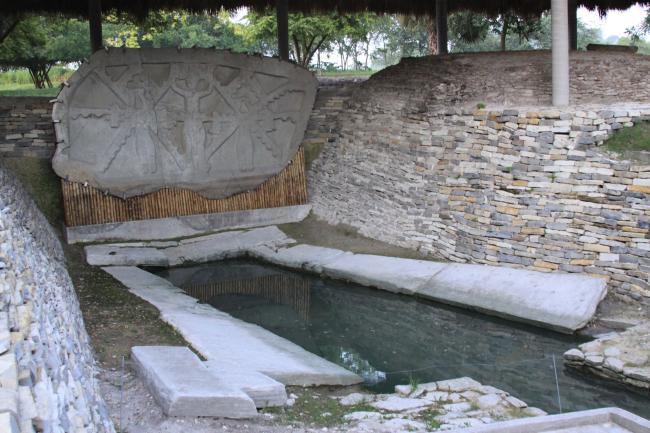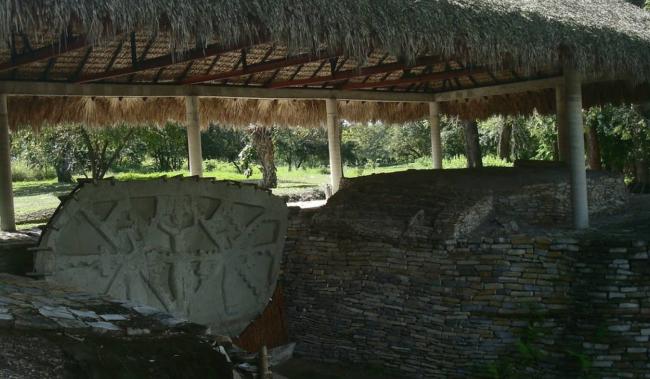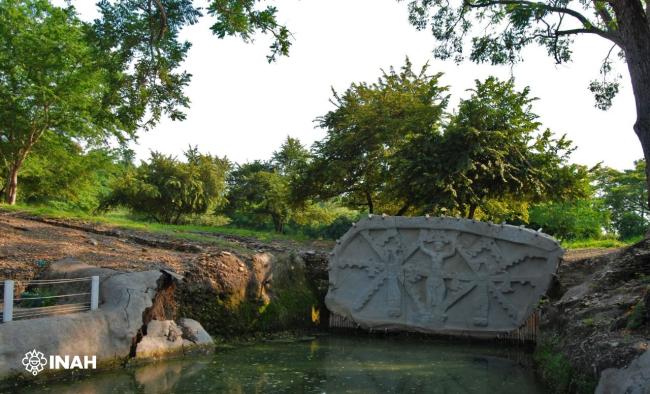
La Noria y Monumento la Sacerdotisa
The La Noria complex is part of Group C, but it stands out because Monument 32 or The Priestess was found there, a slab of approximately 3m x 7m that was erected on the site of its discovery and that can be appreciated during the tour, along with the canal systems of the area, the Laguna de los Patos and other monuments dating from a very early period, around 600 B.C. It is assumed that this is where the settlement originated, due to the importance of water for the city and that it is expressed in the representations and the quality of the monumental sculpture. It is assumed that this is where the settlement originated, due to the importance that water had for the city and that is expressed in the representations and the quality of the monumental sculpture. The area was modified between 600 and 900 A.D. and we know that daily production tasks were also carried out here. Another occupation of the area between 900 and 1350 A.D. led to new modifications of the area, platforms were added that seem to have carried small temples, shrines, and a walkway, which at least in part covered rooms from the previous phase. Some of the late structures are associated with public rituals. A group of burial mounds stands out, from which more than eighty human skeletons have been recovered, corresponding to individuals of different ages and sexes, who in life suffered strong infectious processes.




